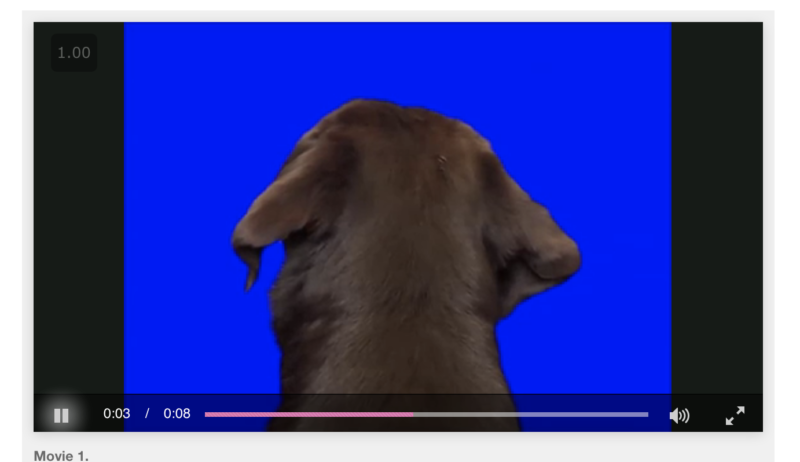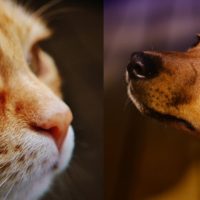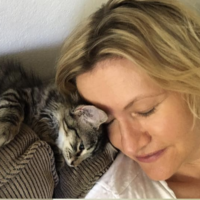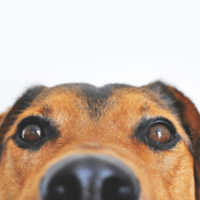Do cats and dogs like to look at us?
We like to look into the faces of our pets but do cats and dogs like to look at our faces?
New research has looked at our pets communication with us and this will help us understand how to improve our relationship with our feline friends and canine companions.
Do dogs like to look at us?
People are tuned into faces. We know this. It helps us communicate. We read feelings in humans and we attempt to do so in our pets too. But what do dogs do? Do they look at other dogs’ faces, at human faces or don’t they care too much for our facial expression?!
Researchers in Hungary and Mexico used MRI brain-scanning on 20 pet dogs and 30 humans to measure responses to faces. The dogs were trained to lie still in the MRI machine, resting their head on a chin rest while watching a screen. All participants were played four types of two-second video clips: the front or back of a human head, and the front or back of a dog head.
Results showed that, as might be expected, humans like faces. When viewing a face, either human or dog, people’s visual systems became active. These brain regions were quieter when people saw the backs of heads.

Dogs had a different response. Their brains weren’t impressed by faces, either those of dogs or of people. Instead, the dogs’ visual systems were more tuned to whether the video featured a dog or a human.
From this research we see that seeing a dog is more important to dogs than seeing a human face. In humans, seeing a face (dog or human) is more important than seeing a human. Humans really are tuned into faces.
We know from previous research that dogs are able to tell the difference between dog and human faces. Their ability to discriminate between different human faces is limited, however. Dogs probably rely much more on their other senses when it comes to discriminating between people.
Previous MRI research discovered that dogs preferred the scent of their own humans to all other presented scents which included scents of other dogs, both familiar and unfamiliar ones and unknown humans. Dogs’ brains also lit up when we spoke to them with light, happy talk.
What your dog really thinks about you
So, it is likely that they recognise us and their other familiar humans using a combination of scent, sound and visual cues but not by looking at our faces alone.
This study used short videos alone to measure brain responses. These did not include people, or dog, behaviour and it is rare that dogs encounter just this one aspect of people recognition. However, thinking of your dog looking out of your window at a person standing in their front yard. They do not recognise them. Not until the person speaks, acts or gets close enough for their scent to be recognised.
Your dog knows you, of course, but it is not your face that they are particularly responding to. This may be a significant difference between dogs and human style of communication but we love them anyway and I think they love us.
Cats vs Dogs: Who loves you more?
Do cats like to look at us?
Many people feel that cats are aloof but cat owners value this independent nature of cats and know that interactions, usually on their cat’s terms, are worth waiting for. But do our cats actually like to look at our faces?
A team of psychologists at the Universities of Sussex and Portsmouth have conducted a couple of experiments with cats, both exploring the slow blink as a form of communication between cats and people.
In case you don’t know it, the slow blink involves narrowing your eyes, as if you are performing a relaxed smile, followed by closing your eyes for a couple of seconds. It can be like a half blink, followed by a full blink. You may have seen your cat do this. The narrowing of the eyes is associated with positive emotional communication in a range of species, including humans, dogs and cats.
The first experiment included a total of 21 cats from 14 different owners and households. The owner slow blinked at their cat from a distance of 1m away and compared the cat’s response to when they did not slow blink.
The second experiment included an additional 24 cats. In this experiment, the researcher, who was unfamiliar to the cat, either slow blinked at the cat or adopted a neutral face without direct eye contact, to see in which situation the cat preferred to approach. They also offered the cat a flat palm while sat opposite.
The first experiment revealed that cats are more likely to slow blink at their owners after their owners have slow blinked at them, compared to when they don’t interact at all. Slow blink at your cat if you want their attention, cat owners!
The second experiment found that the cats were more likely to approach the experimenter’s outstretched hand after they’d slow blinked at the cat, compared to when they had adopted a neutral expression.
Together, this shows that this slow blinking technique can provide a form of positive, emotional communication between cats and humans.
So, try this form of cat chat with your cat and see how they respond.
Do our pets like to look at us?
These studies help us determine the most useful ways to communicate with our pets. Slow blink to your cats. Animate your face to your dog, combining it with talking or getting close enough for your dog to get your scent.
So, yes, cats and dogs like to look at our faces but we need to be a little more specific than just simply looking into their faces and expecting them to look – and love – us back.
Research references
Comparative Brain Imaging Reveals Analogous and Divergent Patterns of Species and Face Sensitivity in Humans and Dogs
The role of cat eye narrowing movements in cat-human communication
About the author
Dr Jo Righetti owns this website Pet Problems Solved. She is a PhD scientist, focussing on companion animals for over 20 years. More about Dr Jo here.
More pet research
- Do Cats and Dogs like to Look at Us?
 Do cats and dogs like to look at us? We like to look into the faces of our pets but do cats and dogs
Do cats and dogs like to look at us? We like to look into the faces of our pets but do cats and dogs - Australian Cat Lovers – We really do Love Our Cats – Here’s How we know
 Australian Cat Lovers We Really Do Love Our Cats – Here’s How We Know Are you a cat lover? Are you a cat owner?
Australian Cat Lovers We Really Do Love Our Cats – Here’s How We Know Are you a cat lover? Are you a cat owner? - Cats and litter: 7 Cat Litter Box Rules
 Cats and litter: 7 Cat Litter Box Rules and the Best Cat Litter What type of cat litter does your cat prefer to use?
Cats and litter: 7 Cat Litter Box Rules and the Best Cat Litter What type of cat litter does your cat prefer to use? - A dog’s environment impacts their communication behaviours
 A dog’s environment impacts their communication behaviours New research has confirmed that a dog’s environment impacts their communication behaviours. Dogs generally matched the enthusiasm
A dog’s environment impacts their communication behaviours New research has confirmed that a dog’s environment impacts their communication behaviours. Dogs generally matched the enthusiasm - KIDS AGES AND SAFETY WITH FAMILY PETS: Is it safe for Kids to have a pet at any Age?
 Parents’ beliefs on kids ages and safety with family pets Parents reveal the age they believe kids can have a family pet, with 1 in
Parents’ beliefs on kids ages and safety with family pets Parents reveal the age they believe kids can have a family pet, with 1 in - Psychiatric disorders and pets: Can Exposure to pets when young influence schizophrenia and bipolar diagnosis?
 Psychiatric disorders and pets: Can exposure to pets when young influence schizophrenia and bipolar diagnosis? Pets are good for us. They help us have
Psychiatric disorders and pets: Can exposure to pets when young influence schizophrenia and bipolar diagnosis? Pets are good for us. They help us have - Pet owners are willing to try alternative therapies
 PET OWNERS ARE WILLING TO TRY ALTERNATIVE THERAPIES Pet owners are now trying alternative therapies. Having worked at All Natural Vet Care, who offer
PET OWNERS ARE WILLING TO TRY ALTERNATIVE THERAPIES Pet owners are now trying alternative therapies. Having worked at All Natural Vet Care, who offer - Dog owner driving habits revealed in UK study
 Do you take your dog in the car with you? You might find these dog owner driving habits fascinating, thanks to Ross Wild from
Do you take your dog in the car with you? You might find these dog owner driving habits fascinating, thanks to Ross Wild from - What is CRISPR and How Can It Help Make Better Dogs?
 Technology is advancing everywhere and that includes the pet world. Learn more about CRISPR in genetic engineering from Deinah Storm… How CRISPR Can Help Make
Technology is advancing everywhere and that includes the pet world. Learn more about CRISPR in genetic engineering from Deinah Storm… How CRISPR Can Help Make - Fur babies chew into family finances: Do you know your pet Budget?
 Recent research shows that our pets are eating into our family finances, perhaps not surprising for us pet lovers. Here’s just how much we
Recent research shows that our pets are eating into our family finances, perhaps not surprising for us pet lovers. Here’s just how much we - Dogs and humans more similar than we think; Even our gut microbiomes are alike!
 Dogs and humans more similar than we think; Even our gut microbiomes are alike! Has anyone ever told you that you look like your
Dogs and humans more similar than we think; Even our gut microbiomes are alike! Has anyone ever told you that you look like your - Shelter dog trends – past present and future: A review of USA shelter dogs
 Shelter dog trends – Past present and future . A review* of shelter dog trends, including dog adoption, ownership and the human-canine relationship in
Shelter dog trends – Past present and future . A review* of shelter dog trends, including dog adoption, ownership and the human-canine relationship in











